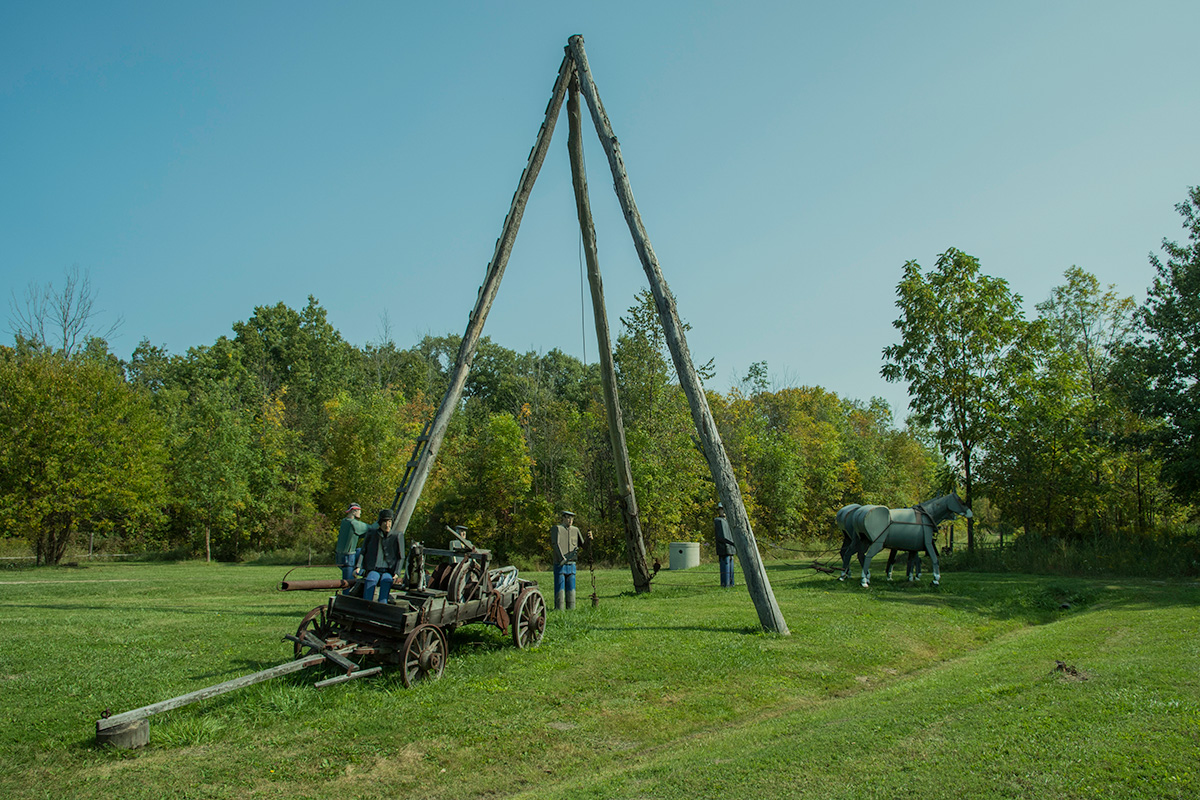In the early days of Oil Springs, transporting people and oil was incredibly harrowing. The pioneers confronted a daunting geography.
Oil Springs lies in the middle of what was called The Great Enniskillen Swamp, a vast area that early surveyors thought was unfit for habitation, farming or mills. The Heavy Brookston Clay made roads almost impossible.
Early newspaper accounts of the 1860s tell of horses sucked into the clay up to their necks and wagons abandoned “in despair”.
In the very early days, a team of horses could haul up to 1.3 tonnes of oil and take it to a central underground storage tank. From there, the oil was pumped into wooden barrels. In winter, horse-drawn sleighs, known as “stone boats”, would carry no more than two barrels to the Port of Sarnia, 38 kilometres away, or the Great Western railhead at Wyoming 16 kilometres to the north.
Later, the system evolved and oil was pumped into wooden oil wagons that horses hauled to Wyoming.
“To be compelled to either walk or ride twelve and a half miles between Wyoming and Oil Springs is a dreadful calamity,” reported The Globe in 1861.
The answer to the mud was using planks as a road surface. The plank road from Oil Springs to Wyoming was first constructed in 1862. The planks continually broke and the roads fell apart with so much traffic hauling such heavy loads. It was the age of the horse and hundreds of men made their living as teamsters, taking oil to Wyoming.

